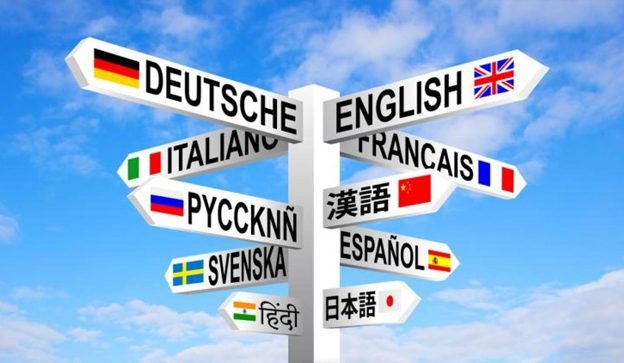Language is the bridge that connects people across cultures, yet crossing that bridge isn’t always easy. Some languages flow naturally for English speakers, while others feel like climbing a steep mountain. That leads to the big question: what is the hardest language to learn?
The truth is, difficulty depends on your native tongue, your learning environment, and your motivation. Still, some languages consistently rank among the hardest for English speakers. This guide explores those languages, explains why they’re so complex, and offers strategies to overcome the challenges.
Harder Than Others
Learning a language is not the same for all languages. Several factors influence whether you’ll breeze through lessons or struggle for years.
Grammar Complexity
Languages like Russian, Hungarian, or Finnish have highly inflected grammar. Words change form depending on cases, genders, or verb conjugations. For instance, Hungarian uses 18 cases to mark sentence roles, while English gets by with word order.
Pronunciation and Tones
Some languages require mastering sounds that English doesn’t have. Mandarin Chinese uses four tones—a single syllable can mean four different things depending on pitch. Thai takes it further with five tones, and Cantonese with six or more.
Writing Systems
English relies on 26 letters. Compare that to Mandarin’s thousands of characters, or Japanese, which requires mastering three separate scripts: hiragana, katakana, and kanji.
Cultural and Linguistic Distance
The further a language drifts from English roots, the harder it feels. Dutch or Norwegian feel familiar because of shared Germanic heritage, while Arabic or Korean feel alien due to unique grammar and vocabulary.
Immersion Opportunities
The availability of learning materials and exposure also plays a huge role. Spanish speakers are everywhere, and resources abound. Compare that to Icelandic, which has only 350,000 speakers worldwide.
Learn for English Speakers
The U.S. Foreign Service Institute (FSI) classifies languages into categories based on the hours needed for an English speaker to reach proficiency. Category I languages (like Spanish) take about 600 hours. Category IV and V languages (like Arabic or Mandarin) require around 2,200 hours or more.
Here’s a closer look at the hardest contenders.
Mandarin Chinese: The Giant of Difficulty
Mandarin is often called the hardest language to learn and for good reason.
- Tonal complexity: Mandarin has four tones plus a neutral one. A simple syllable like ma could mean “mother,” “horse,” or “scold” depending on pitch.
- Writing system: With more than 50,000 characters, even educated Chinese use about 8,000 daily. Learners typically aim for 3,000 just to read newspapers.
- Lack of cognates: English and Mandarin share very few words, which means you’re memorizing almost everything from scratch.
Example: A learner may spend months just memorizing how to write and recognize characters like 爱 (ài for love) or 学 (xué for study). Unlike alphabets, there’s no shortcut—every symbol must be memorized.
Arabic: One Language, Many Dialects
Arabic presents unique hurdles that go beyond grammar.
- Script: Written from right to left, Arabic letters change form depending on their position in a word.
- Dialects: Modern Standard Arabic is used in books and news, but Egyptians, Moroccans, and Saudis speak different dialects. Learners often find their classroom Arabic isn’t spoken on the street.
- Sounds: Arabic has guttural sounds like ʿayn (ع) and emphatic consonants that English lacks.
Case Study: Students in Cairo often report confusion when locals use slang. Even after studying Modern Standard Arabic for years, they feel like beginners in daily conversations.
Japanese: Three Scripts, Endless Challenges
Japanese is elegant but notoriously difficult.
- Three writing systems: Hiragana, katakana, and kanji all coexist. A single sentence may use all three.
- Politeness levels: Japanese grammar shifts depending on formality. You must choose the right verb forms for bosses, friends, or strangers.
- Kanji burden: Borrowed from Chinese, kanji characters carry multiple readings. The symbol 生 can mean “life,” “raw,” or “student,” depending on context.
Fun fact: The Japanese word for “difficult” is 難しい (muzukashii) a word learners quickly memorize.
Korean: Simple Alphabet, Complex Grammar
At first, Korean seems approachable because of Hangul, its logical alphabet. Yet deeper study reveals the challenge.
- Grammar: Korean sentences often follow a subject object verb order, unlike English’s subject-verb-object.
- Honorifics: Speech levels shift depending on age, status, and social setting. Using the wrong one may sound rude.
- Verb endings: Small changes in endings can alter meaning significantly.
Quote from a language coach:
“Hangul is easy. Korean is not.”
Russian: Grammar Twists and Turns
Russian belongs to Category IV in the FSI ranking, requiring about 1,100 hours.
- Cases: Russian nouns change endings depending on role. For example, “Moscow” could appear as Moskva (Москва), Moskvy (Москвы), or Moskvoĭ (Москвой).
- Alphabet: The Cyrillic script feels foreign at first but is manageable after practice.
- Pronunciation: Stress in words shifts unpredictably, which can change meaning.
Example: The word for “milk” is molokó. Shift the stress to the first syllable, and it sounds odd or incorrect.
Hungarian: Grammar Gymnastics
Hungarian is one of Europe’s hardest languages.
- Eighteen cases: English uses prepositions like “in the house.” Hungarian changes word endings instead.
- Vowel harmony: Words adjust vowels depending on front or back sounds.
- Unique vocabulary: Few shared roots with English or other European languages.
Note: Despite its complexity, Hungarian is famous for being logical once you understand its patterns.
Other Notable Challengers
- Finnish: Agglutinative grammar means words can stretch endlessly with added suffixes.
- Icelandic: Preserves Old Norse grammar; even modern Icelanders read medieval texts with ease.
- Navajo: Uses verb based structures and sounds that don’t exist in English.
Comparison Table:
| Language | Writing System | Key Challenge | Avg. Study Time (FSI) |
| Mandarin | Characters | Tones + 50,000+ characters | 2,200 hours |
| Arabic | Abjad (script) | Dialects + root system | 2,200 hours |
| Japanese | 3 scripts | Politeness + kanji | 2,200 hours |
| Korean | Hangul alphabet | Honorifics + grammar | 2,200 hours |
| Russian | Cyrillic alphabet | Cases + stress patterns | 1,100 hours |
| Hungarian | Latin alphabet | 18 cases + vowel harmony | 1,100 hours |
How to Make the Hardest Languages Easier
Even the most challenging languages become possible with the right strategy.
- Start with immersion: Watch shows, listen to songs, and surround yourself with the language.
- Use spaced repetition: Tools like Anki help memorize vocabulary efficiently.
- Find a tutor or partner: Speaking early builds confidence. Platforms like iTalki or HelloTalk make it easy.
- Set small goals: Instead of “learn Japanese,” try “learn 20 kanji per week.”
- Stay consistent: Daily practice beats cramming.
Real-life success story: Benny Lewis, author of Fluent in 3 Months, tackled Hungarian by focusing on conversation first, not grammar. Within weeks, he was chatting with locals.
Easier Languages Compared to the Hardest
To put things in perspective, let’s compare the hardest languages with the easiest for English speakers.
- Spanish: Straightforward grammar, phonetic spelling, and shared vocabulary (example: hospital is the same in both).
- Dutch: Germanic roots make sentence structure familiar.
- Norwegian: Simple verb conjugations and pronunciation.
- Italian: Regular rules and musical pronunciation.
Table: Easiest vs. Hardest
| Easiest Languages | Hours to Learn | Hardest Languages | Hours to Learn |
| Spanish | 600 | Mandarin | 2,200 |
| Dutch | 600 | Arabic | 2,200 |
| Norwegian | 600 | Japanese | 2,200 |
| Italian | 600 | Korean | 2,200 |
Frequently Asked Questions
Is Mandarin the hardest language in the world?
For English speakers, yes—it’s among the hardest due to tones and characters. But for a Chinese speaker, English might be harder because of irregular spelling.
How long does it take to learn Arabic or Japanese?
The FSI estimates around 2,200 classroom hours. That’s five years of steady study for many learners.
Which languages are easiest for English speakers?
Spanish, Dutch, Norwegian, and Italian often top the list thanks to their similarities to English.
Does learning one hard language make others easier?
Absolutely. Mastering Russian cases helps when learning Polish or Ukrainian. Learning Mandarin tones gives an edge in Thai or Cantonese.
Final Thoughts:
The hardest language to learn isn’t the same for everyone. For English speakers, languages like Mandarin, Arabic, Japanese, Korean, Russian, and Hungarian stand out as the most challenging. They demand thousands of hours, intense practice, and cultural immersion.
But here’s the secret: passion beats difficulty. Learners who love anime push through Japanese kanji. Fans of K-pop persist with Korean honorifics. Students fascinated by Middle Eastern culture master Arabic despite the dialect maze.



